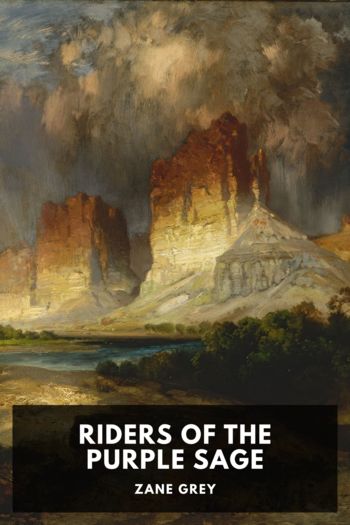Short Fiction, H. G. Wells [i am malala young readers edition .TXT] 📗

- Author: H. G. Wells
Book online «Short Fiction, H. G. Wells [i am malala young readers edition .TXT] 📗». Author H. G. Wells
Allusion has already been made to the glittering objects upon masts that stood upon the terrace of the nearer building. It dawned upon Mr. Cave, after regarding one of these masts very fixedly on one particularly vivid day, that the glittering object there was a crystal exactly like that into which he peered. And a still more careful scrutiny convinced him that each one in a vista of nearly twenty carried a similar object.
Occasionally one of the large flying creatures would flutter up to one, and, folding its wings and coiling a number of its tentacles about the mast, would regard the crystal fixedly for a space—sometimes for as long as fifteen minutes. And a series of observations, made at the suggestion of Mr. Wace, convinced both watchers that, so far as this visionary world was concerned, the crystal into which they peered actually stood at the summit of the endmost mast on the terrace, and that on one occasion at least one of these inhabitants of this other world had looked into Mr. Cave’s face while he was making these observations.
So much for the essential facts of this very singular story. Unless we dismiss it all as the ingenious fabrication of Mr. Wace, we have to believe one of two things: either that Mr. Cave’s crystal was in two worlds at once, and that, while it was carried about in one, it remained stationary in the other, which seems altogether absurd; or else that it had some peculiar relation of sympathy with another and exactly similar crystal in this other world, so that what was seen in the interior of the one in this world was, under suitable conditions, visible to an observer in the corresponding crystal in the other world; and vice versa. At present, indeed, we do not know of any way in which two crystals could so come en rapport, but nowadays we know enough to understand that the thing is not altogether impossible. This view of the crystals as en rapport was the supposition that occurred to Mr. Wace, and to me at least it seems extremely plausible.
And where was this other world? On this, also, the alert intelligence of Mr. Wace speedily threw light. After sunset, the sky darkened rapidly—there was a very brief twilight interval indeed—and the stars shone out. They were recognisably the same as those we see, arranged in the same constellations. Mr. Cave recognised the Bear, the Pleiades, Aldebaran, and Sirius: so that the other world must be somewhere in the solar system, and, at the utmost, only a few hundreds of millions of miles from our own. Following up this clue, Mr. Wace learned that the midnight sky was a darker blue even than our midwinter sky, and that the sun seemed a little smaller. And there were two small moons! “like our moon but smaller, and quite differently marked” one of which moved so rapidly that its motion was clearly visible as one regarded it. These moons were never high in the sky, but vanished as they rose: that is, every time they revolved they were eclipsed because they were so near their primary planet. And all this answers quite completely, although Mr. Cave did not know it, to what must be the condition of things on Mars.
Indeed, it seems an exceedingly plausible conclusion that peering into this crystal Mr. Cave did actually see the planet Mars and its inhabitants. And, if that be the case, then the evening star that shone so brilliantly in the sky of that distant vision, was neither more nor less than our own familiar Earth.
For a time the Martians—if they were Martians—do not seem to have known of Mr. Cave’s inspection. Once or twice one would come to peer, and go away very shortly to some other mast, as though the vision was unsatisfactory. During this time Mr. Cave was able to watch the proceedings of these winged people without being disturbed by their attentions, and, although his report is necessarily vague and fragmentary, it is nevertheless very suggestive. Imagine the impression of humanity a Martian observer would get who, after a difficult process of preparation and with considerable fatigue to the eyes, was able to peer at London from the steeple of St. Martin’s Church for stretches, at longest, of four minutes at a time. Mr. Cave was unable to ascertain if the winged Martians were the same as the Martians who hopped about the causeways and terraces, and if the latter could put on wings at will. He several times saw certain clumsy bipeds, dimly suggestive of apes, white and partially translucent, feeding among certain of the lichenous trees, and once some of these fled before one of the hopping, round-headed Martians. The latter caught one in its tentacles, and then the picture faded suddenly and left Mr. Cave most tantalisingly in the dark. On another occasion a vast thing, that Mr. Cave thought at first was some gigantic insect, appeared advancing along the causeway beside the canal with extraordinary rapidity. As this drew nearer Mr. Cave perceived that it was a mechanism of shining metals and of extraordinary complexity. And then, when he looked again, it had passed out of sight.
After a time Mr. Wace aspired to attract the attention of the Martians, and the next time that the strange eyes of one of them appeared close to the crystal Mr. Cave cried out and sprang away, and they immediately turned on the light and began to gesticulate in a manner suggestive of signalling. But when at last Mr. Cave examined the crystal again the Martian had departed.
Thus far these observations had progressed in early





Comments (0)